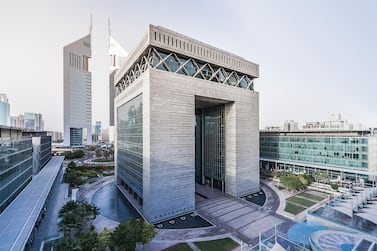Many people assume investing is a complex business, but it doesn't have to be. Often the simplest way is the best.
By keeping it uncomplicated you will expend a lot less effort and rack up fewer dealing charges and fund costs, which can massively boost the overall value of your pot.
So don't allow yourself to be confused by industry jargon or advisers peddling overly complex products. If you want to start building extra funds for retirement, Tuan Phan, a board member of SimplyFI.org, a non-profit community of UAE investment enthusiasts, says avoiding needless complexity is a genius move. "It was Leonardo Da Vinci that said 'simplicity is the ultimate sophistication' and this is extremely relevant when it comes to investing."
He says too many professional portfolios are deliberately and unnecessarily complicated, containing a vast spread of asset classes including shares, funds, bonds, commodities, property, gold, cash and advanced financial instruments such as derivatives that cancel each other out.
Advisers do this to justify their high fees, but this strategy can backfire. “These complex portfolios end up being inefficient, unbalanced and expensive, resulting in poor performance over time,” says Mr Phan.
When investing, charges are your biggest enemy. The more you pay each year, the harder your money has to work to offset the cost.
Worse, many charging structures are also complicated, with upfront and annual portfolio fees and charges on the underlying investment funds in your portfolio. This makes it difficult to see how much you are actually handing over in total.
Offshore portfolio bonds, for example, are single premium life insurance policies produced by global life companies and distributed through financial brokers in the UAE. These are investment wrappers that contain a range of investments and often for a fixed term, say five or 10 years, or for whole of life.
Meanwhile, fixed-term contractual savings plans have also been heavily sold in the UAE. Here, instead of an upfront payment, you make monthly contributions for a set term, which can be as long as 25 years. However, the insurance company providing the plan pays upfront commission to your adviser, which comes out of your contributions.
Charges on both types of plan can be punitive. For example, you might pay a 1.5 per cent charge on all your initial contributions, whether lump sum or monthly. The provider may also charge 1 per cent a year for running your plan plus there are charges on the underlying funds, which may start at 0 per cent for internal funds but rise to 2 per cent for funds run by external managers.
Steve Cronin of UAE-based financial community DeadSimpleSaving.com says both types of expatriate investment vehicle can charge total, disguised fees of 4 per cent a year. "This is a waste of money when all you really need is a cheap offshore brokerage such as Interactive Brokers, a cheap way to transfer money such as an exchange house, a cheap, globally-diversified passive stock index tracker such as the Vanguard FTSE All-World UCITS ETF (VWRD) and a cheap bond fund."
The UAE insurance Authority is working on stiffer regulations designed to transform how these products are sold, which should include a cap on the commission advisers can earn from selling offshore bonds or fixed-term contractual savings plans, and rules forcing them to explain all fees and commission.
Mr Cronin says a far simpler approach will still get the job done, while also slashing fees. “Building funds for retirement relies on the power of compounding, as you earn interest on interest, gains on gains. Fees massively reduce this compounding, and the impact is magnified over 20 to 40 years,” he adds.
The sums are quite startling. Say you invest $100,000 and your money grows at an average rate of 6 per cent a year. If your annual charges total 2 per cent a year (and you can easily pay a lot more), your money will grown to $219,112 after 20 years.
This sounds reasonable until you see how much you would have if you paid just 1 per cent a year instead.
In that case, the total money in your pot would have risen to $265,330, an incredible $46,218 more. That’s a big difference for a little 1 per cent.
Annual charges are punishing because you pay them year after year, and the longer you invest and the bigger your portfolio grows, the more you pay.
Over 30 years the damage is therefore much greater: that 2 per cent charge would leave you $324,340, but at 1 per cent you would have $432,194, more than $100,000 more.
Then imagine that instead of 1 per cent, you pay something as low as 0.20 per cent. In that case your $100,000 would have grown to $542,713 over 30 years.
Now you are almost $200,000 ahead. Incredibly, this is double the amount you originally put in.
Mr Cronin says this underlines the importance of keeping a close watch on fees. “If you pay more than 1 per cent, and certainly over 2 per cent, you may be losing hundreds of thousands of dollars over time, all for no good reason.”
If you think it is impossible to invest and pay just 0.20 per cent in charges a year, then think again.
Hugely popular exchange traded funds (ETFs) allow you to passively track almost every major stock market index in the world, and some have charges of as low as 0.07 per cent a year.
UAE residents will typically buy them through an offshore brokerage platform such as such as Interactive Brokers, Internaxx, Saxo Bank or Swissquote, or AES International in the UAE.
DIY investors can buy them on an execution only basis, without advice, and this keeps charges down.
There will be platform charges on top, but these should be minimal. Always compare prices when choosing your platform, to find the best deal for you.
Mr Phan says you can keep things really simple and still build a widely diversified portfolio by purchasing just two ETFs.
His first tip is the Vanguard FTSE All-World ETF (VWRD), which has annual ongoing charges figure of just 0.25 per cent.
This aims to deliver long-term capital growth by tracking the performance of the FTSE All-World Index of large and medium-sized companies in both developed and emerging countries.
It holds almost 3,000 stocks in nearly 47 countries and as global markets have recovered it is up just over 10 per cent year-to-date.
Mr Phan’s ETF bond tip is the iShares Global Govt Bond UCITS ETF (IGLO), which gives you diversified exposure to global government bonds, and has an annual ongoing charges figure of just 0.20 per cent.
Mr Cronin recommends putting 60 to 80 per cent of your portfolio in stocks and the remainder in bonds “Invest regularly like clockwork and then get on with your life. It’s that simple.”
Once you are underway, you could inject a little bit of complexity by building a broader spread of ETFs.
Oliver Smith, portfolio manager at online trading platform IG Index, which has offices in Dubai, suggests HSBC MSCI World (HMWO), which has total annual charges of just 0.15 per cent.
You could combine that with European-focused ETF Lyxor Core Euro STOXX 600 (MEUD), which charges just 0.07 per cent. Mr Smith also tips, Vanguard FTSE Emerging Markets (VFEM), which charges 0.25 per cent.
You could then balance that with a bond fund such as iShares £ Corporate Bond 0-5yrs, which has charges of 0.20 per cent, he adds.
Stuart Ritchie, director of wealth advice at AES International, recommends building a balanced, globally diversified portfolio of low-cost ETFs such as the iShares Core S&P 500 ETF (IVV), which has a total expense ratio of just 0.04 per cent. “ETFs like these are efficient and low cost ways of tracking your chosen index.”
He says buying ETFs as part of a long-term ‘buy and hold’ strategy is both simple and minimises dealing and transaction fees. “It also removes the speculation element. You’re not trying to predict who will win or lose, you’re just buying the whole market with the view that over time, share prices will rise.”
The annual Dalbar Quantitative analysis of Investor Behaviour study of long-term equity performance showed that over the 20 years to December 31 2017, the US index S&P 500 delivered an average annualised return of 7.20 per cent a year, while the average in equity investor generated 5.29 per cent.
Active trading can therefore backfire. “Investing doesn’t need to be complex, you simply need a low-cost portfolio of globally diversified ETFs investing in equities and bonds according to your individual risk profile,” adds Mr Ritchie.








